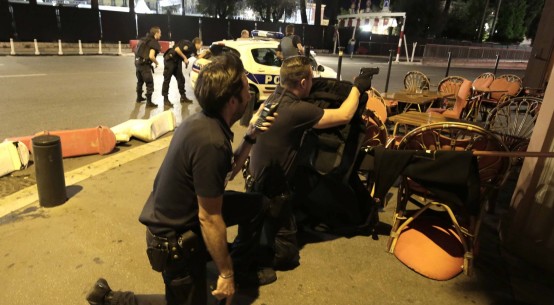
The conflict is between the Indian state and Kashmiri militants supported by Pakistan. But on the ground, the conflict ends up being between human beings destroying each other. Pawns in a larger game. How can we enlarge the human element enough to corner the political puppeteers, to consider that human beings matter more than turf wars?
When I went to Kargil in May 1999 to report on the war between India and Pakistan, a friend advised me that it was not safe for me to roam around Srinagar without an escort. He delegated a friend’s son to accompany me everywhere — a young man, sincere and earnest but in obvious, suppressed deep anguish. He stammered and stuttered. His hands trembled as we shared meals together. I tried to draw him out but most of the time he mumbled and didn’t, as we say, “want to go there”.
I had to kill my journalistic curiosity in respect to him. But, there was no running away from the fact that when I walked the narrow streets and stopped to talk with people, his nervousness would get the better of him. He would try to rush me through always saying, “Better not to ask these questions”. I tried explaining to him that I couldn’t do my job without asking these questions. He looked at me and puzzled on why I would want a job like this. He asked me where I was staying in Kargil and when I told him, he informed me that it was the worst place to stay since it was right next to the army helipad, which was a hot target for the Pakistanis.
Médecins Sans Frontières, or Doctors Without Borders, have reported that 45% of the population of Kashmir is suffering from mental illnesses. That is not a surprise. According to the survey conducted by Médecins Sans Frontières, released recently, 41% show symptoms of probable depression, 26% show symptoms of probable anxiety and 19% show symptoms of probable Post-Traumatic Stress Disorder (PTSD). In this survey, women are suffering in greater numbers. At least 50% of women and 37% of men have probable depression while 36% of women and 21% of men have a probable anxiety disorder. This survey translates into 1.8 million adults who are suffering from mental disorders.
But, in my experience, the ones who are the most traumatized are the children, often not able to even express their fears and pain.
We have to consider that when children see their parents being lined up outside their homes at all odd hours of the night, routinely kicked and hauled off for questioning, the inevitable revenge emotion may be triggered. When militants come and take over villages and children watch their parents being forced at gunpoint to feed and hide the militants, observing their supposedly strong patriarch behave in a helpless manner begging for his and his family’s lives, children will feel humiliated and traumatized.
We cannot exclude the psychological impact suffered by our security forces’ families. Women bring up their children alone with the subterranean subconscious always there: Will there come a moment when I will become a single parent forever? The children of army officers also grow up with the terrible anxiety that their fathers may not come home. Again, the inevitable revenge reaction will be triggered. Army officers’ children get accustomed to a missing father at all the landmark events in their lives, whether it is an important match, Diwali, debate, sports day, or receiving a coveted prize. Going through all these events, the children are stoic. Do we do anything to help these families through all this? But, when an officer’s family receives a tricolour-covered coffin instead of running into his arms with joy, the fear that the children have ingrained in their lives culminates into the worst trauma. Do we do anything to help other than that heart-breaking ritual on Republic Day that the widow is subjected to?
In Kashmir, there is the fact that India has roundly messed up the situation, successively since 1947, starting with Jawaharlal Nehru, and has continued to do so. But, that is another article. Today, we hate the violence in Kashmir. There is the obvious argument that we cannot let Kashmir go since it would lead to every state demanding independence and there are enough on the brink. Yet we cannot continue being an armed presence amidst a hostile population.
In the current situation, we cannot ignore the psychological trauma that the people of Kashmir, particularly the children, are subjected to. And, most importantly, we cannot ignore the psychological trauma the families, particularly the children of army officers, are subjected to.
The conflict is between the Indian state and Kashmiri militants supported by Pakistan. But on the ground, the conflict ends up being between human beings destroying each other. Pawns in a larger game. How can we enlarge the human element enough to corner the political puppeteers, particularly in Pakistan, to consider that human beings matter more than turf wars?
Madhu Trehan is editor-in-chief, newslaundry.com



